Learning a new language is an exciting challenge, and with the rise of digital tools, the process has become more accessible than ever. Two of the most popular language learning platforms are Rosetta Stone and Duolingo. Although both claim to help users become fluent in a new language, they offer very different approaches. In this article, we’ll compare these two platforms in detail, focusing on key features, pros, and cons. Ultimately, we’ll explain why Rosetta Stone is a superior choice for those serious about mastering a language.
Rosetta Stone: A Leader in Immersive Language Learning
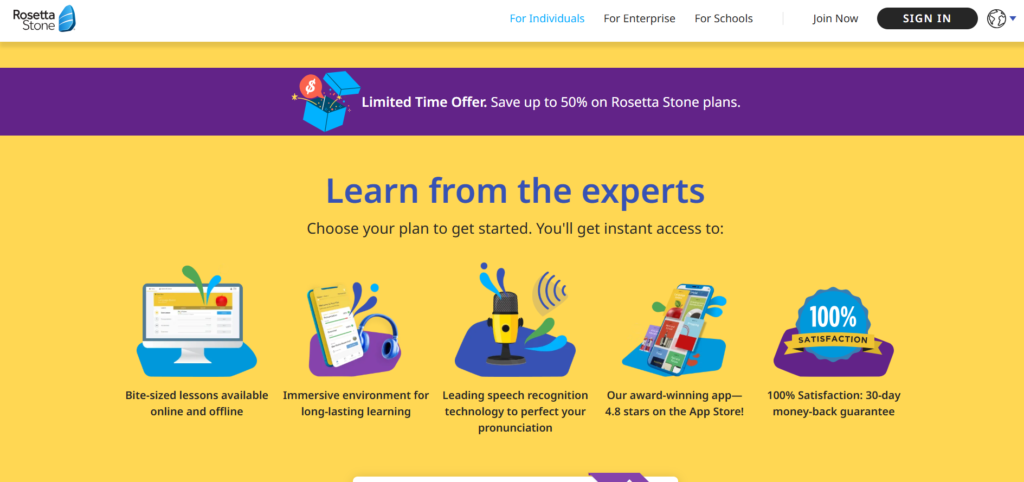
For many years, Rosetta Stone has been a top name in language learning. It focuses on an immersive approach, aiming to teach users to think and respond directly in the target language without using translations. The method relies on visual cues and context, similar to how native speakers naturally pick up a language. This approach has made it one of the most effective ways to become fluent in a new language.
Duolingo: Learning Through Fun and Games
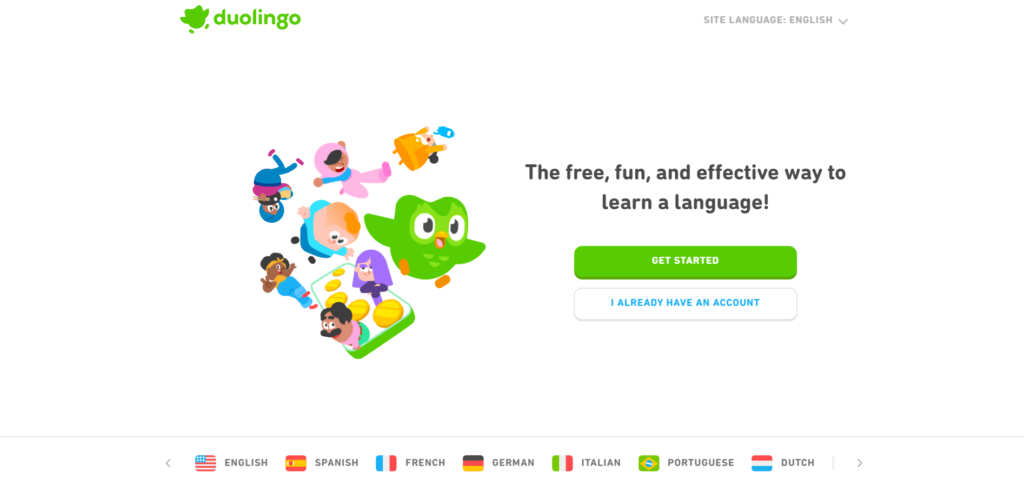
Duolingo has changed the way we learn languages by making it fun and interactive. Its gamified lessons include daily challenges and rewards that encourage users to keep learning. Known for its ease of use, Duolingo offers free lessons, with the option to pay for a premium subscription that removes ads and adds extra features.
1. Teaching Methodology: Immersive vs. Gamified Learning
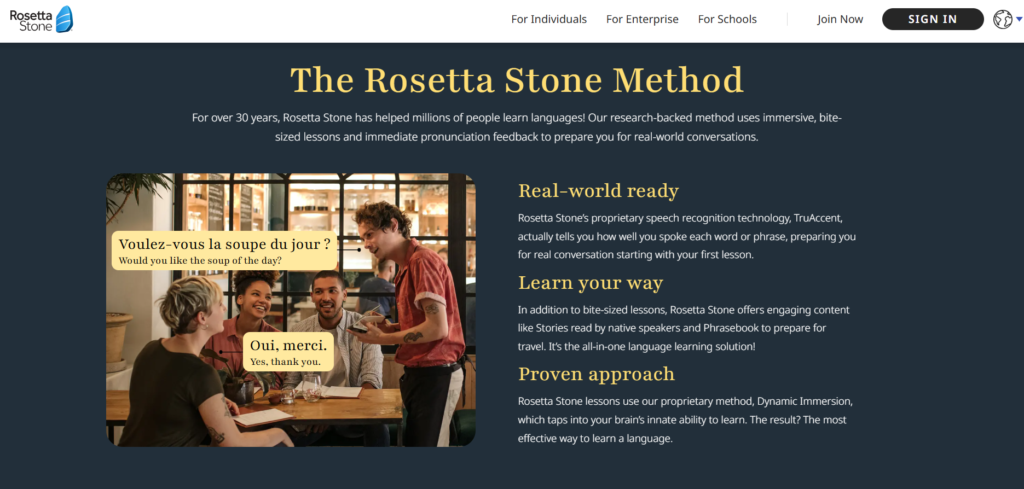
The foundation of any language learning tool is its teaching methodology. Rosetta Stone is built around an immersive approach, where learners are exposed to the target language in a natural way. It uses pictures, sounds, and text, all in the language being learned. This method encourages users to think directly in the new language, fostering better understanding and retention.
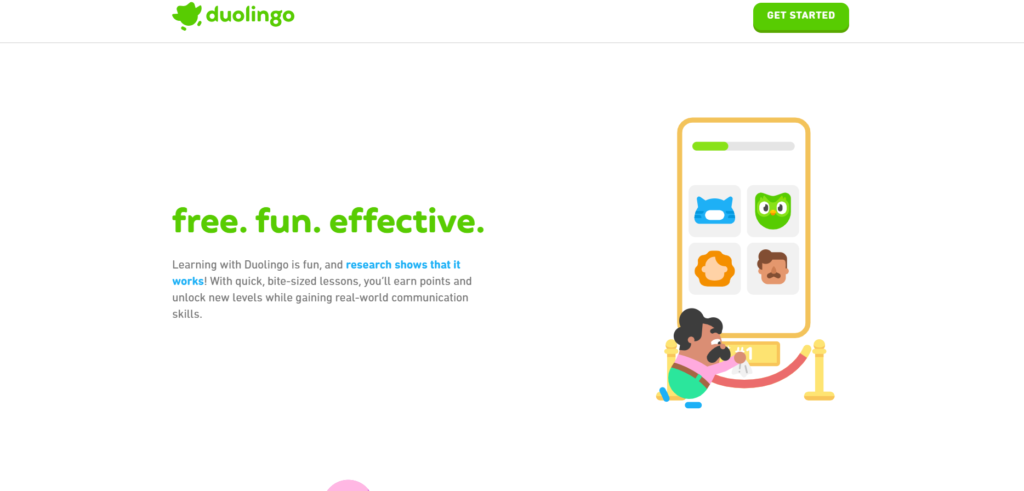
On the other hand, Duolingo takes a gamified approach. The lessons are short, interactive, and often rely on translation exercises. While this can be fun and engaging, it may not always lead to a true understanding of how the language functions in real-world contexts.
Why Rosetta Stone excels: Its immersive method is more akin to how we learn our first language, which leads to better long-term retention and practical usage.
2. Content Quality: Real-Life Relevance vs. Absurd Sentences
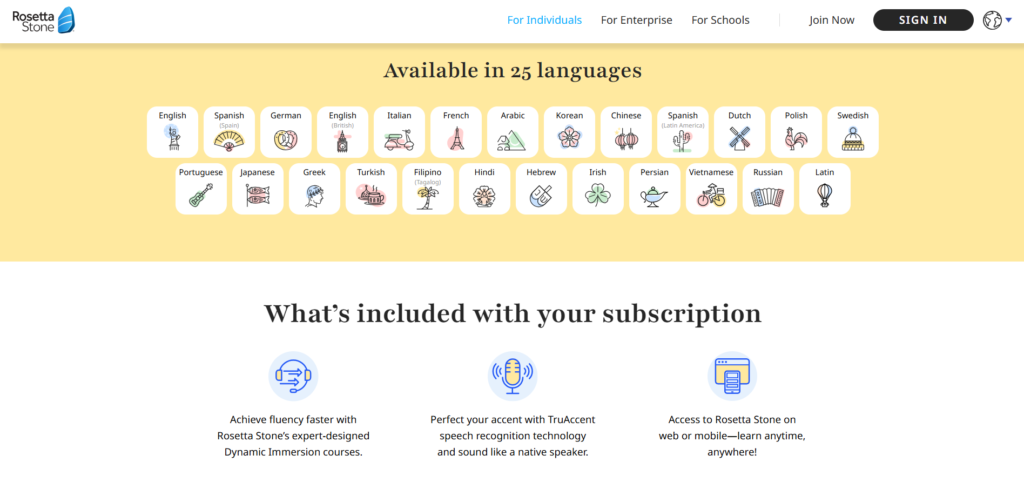
When it comes to the content of their lessons, Rosetta Stone focuses on real-life language skills. The lessons are structured around practical phrases and words that you would use in everyday conversations. You won’t find bizarre sentences like “The cat is reading a newspaper” or “The elephant is wearing a hat,” which are common in Duolingo.
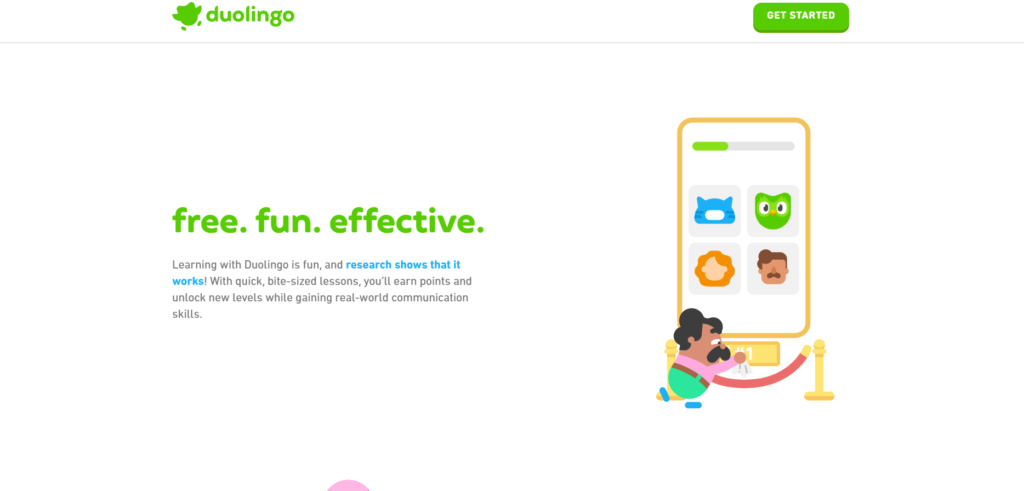
Duolingo, while it does cover a range of useful vocabulary, often includes out-of-context or silly sentences that do little to help in real-world communication.
Why Rosetta Stone excels: Its content is designed to be applicable to everyday conversations, enhancing the learner’s ability to use the language practically.
3. Speech Recognition: TruAccent™ vs. Basic Feedback
A standout feature of Rosetta Stone is its advanced speech recognition technology, TruAccent™. This feature listens to your pronunciation and provides instant feedback. It helps you improve your accent and get closer to native pronunciation.
Duolingo, while it also offers speech recognition, is not as accurate or advanced as TruAccent™. The feedback provided is basic and less focused on helping learners perfect their pronunciation.
Why Rosetta Stone excels: TruAccent™ offers more detailed and accurate pronunciation feedback, which is vital for speaking a new language correctly.
4. Learning Structure: Comprehensive Curriculum vs. Fragmented Lessons
Rosetta Stone offers a structured curriculum that gradually builds on the language skills learned in previous lessons. Each lesson is logically connected, ensuring that learners progress step-by-step. This approach provides a comprehensive and organized learning path.
In contrast, Duolingo’s lessons are shorter and can be completed in any order. While this allows for flexibility, it can sometimes lead to a fragmented learning experience with gaps in knowledge.
Why Rosetta Stone excels: The structured curriculum ensures that learners build a solid foundation and progress at a steady pace, without missing critical skills.
5. Cultural Context: Limited Cultural Exposure vs. Cultural Insights
Learning a language isn’t just about memorizing vocabulary and grammar rules—it’s also about understanding the culture behind it. Rosetta Stone integrates cultural context into its lessons, allowing learners to understand the nuances of the language and how it is used in everyday situations.
Duolingo, on the other hand, does not offer much in terms of cultural insights. While it teaches the language, it doesn’t dive deep into the cultural aspects that make communication more meaningful.
Why Rosetta Stone excels: Understanding the cultural context is essential for effective communication, and Rosetta Stone excels at incorporating this into its lessons.
6. User Experience: Professional Design vs. Casual Interface
The user experience of a language learning platform can significantly impact how much time and effort you’re willing to invest in it. Rosetta Stone features a clean, professional design that is focused on helping learners stay on task. It avoids distractions and fosters a more serious learning environment.
In comparison, Duolingo uses a playful, cartoonish design, which might appeal to younger users but could be distracting for adult learners or those looking for a more professional tone.
Why Rosetta Stone excels: Its straightforward and professional design creates a focused and goal-oriented learning environment.
7. Progress Tracking: Detailed Metrics vs. Basic Tracking
Rosetta Stone provides detailed progress tracking, allowing learners to monitor their achievements over time. You can see how much you’ve learned, identify areas where you need to improve, and stay motivated with regular feedback.
While Duolingo offers some progress tracking, it tends to focus on gamified metrics like streaks and daily points. While these can be fun, they don’t always offer a clear picture of how well you’re mastering the language.
Why Rosetta Stone excels: Its detailed tracking system provides valuable insights into your learning progress and helps you stay on track.
8. Cost: Subscription-Based vs. Free with Ads
Rosetta Stone requires a paid subscription, but the cost is justified by the high-quality content, structured lessons, and comprehensive learning tools it provides.
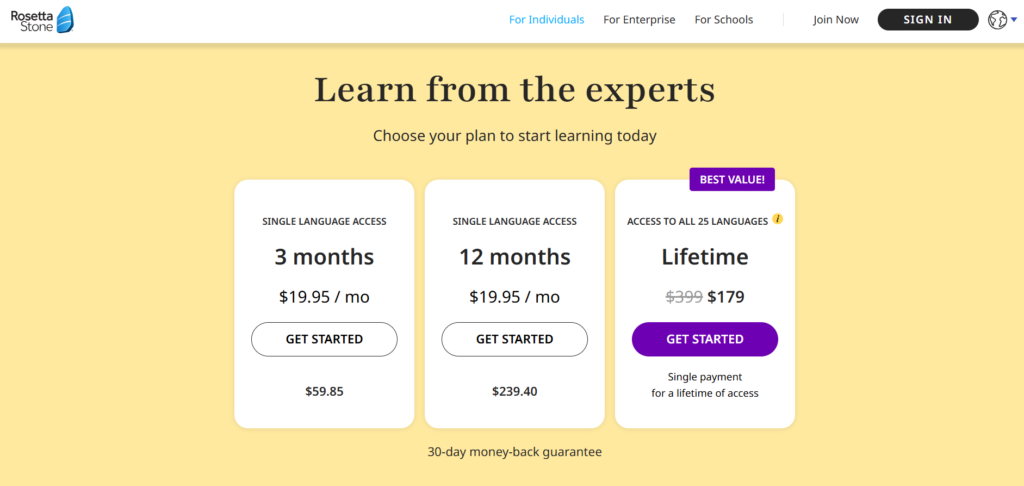
Duolingo, on the other hand, is free to use, with an optional premium version that removes ads and provides additional features.
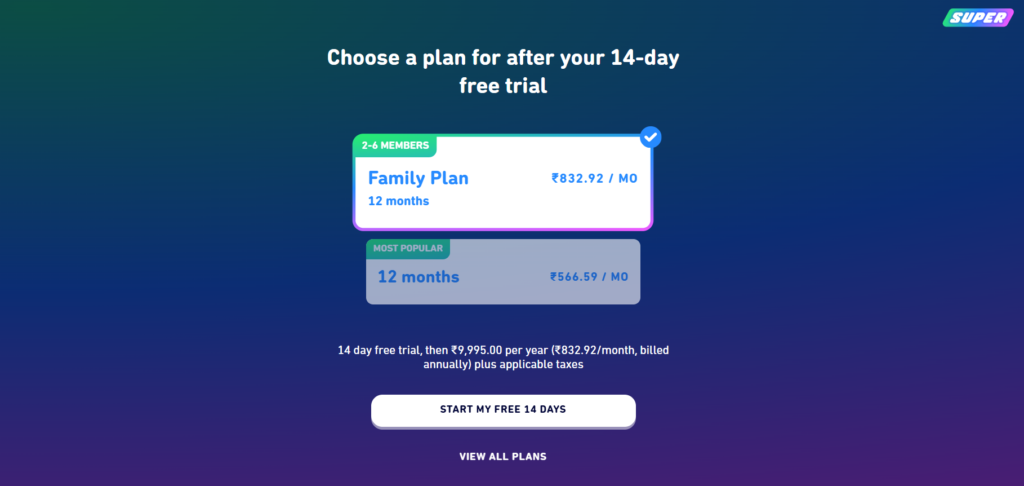
Why Rosetta Stone excels: While it does require an investment, Rosetta Stone offers a more professional and in-depth language learning experience, making it a better long-term choice for serious learners.
9. Language Support: Limited Languages vs. Extensive Language Options
Rosetta Stone supports a wide variety of languages, including less commonly taught ones, such as Farsi, Swahili, and Tagalog. This makes it a great choice for learners interested in studying a range of languages.
Duolingo also offers many languages but may not have the same depth or support for less widely spoken languages.
Why Rosetta Stone excels: Its extensive range of languages ensures that learners can find the language they want to study, whether it’s a popular choice or something more niche.
10. Learning Goals: Fluency-Oriented vs. Casual Learning
The ultimate goal of Rosetta Stone is to help learners achieve fluency. Its lessons are designed to take learners from beginner to advanced levels, providing the tools and knowledge necessary to speak the language confidently.
Duolingo, while a fun and engaging platform, is better suited for casual learners looking to get a basic understanding of a language rather than full fluency.
Why Rosetta Stone excels: Its focus on fluency makes it the best choice for serious learners who are committed to mastering a language.
Conclusion: Why Rosetta Stone is the Superior Choice
While Duolingo is a great option for beginners or casual learners, Rosetta Stone offers a more comprehensive, immersive, and structured approach. Its focus on real-life language skills, accurate pronunciation feedback, cultural context, and fluency makes it the better choice for anyone serious about learning a new language. By investing in Rosetta Stone, you’ll be setting yourself up for success with a deeper understanding of the language and the ability to use it confidently in real-world situations.
FAQs
Rosetta Stone worth the price?
Yes, Rosetta Stone offers high-quality, immersive lessons that justify its subscription cost.
Can I learn a language with Duolingo for free?
Yes, Duolingo offers free lessons, although you can pay for a premium version to remove ads and access additional features.
Which platform is better for beginners?
Duolingo is more accessible for beginners due to its gamified approach, but Rosetta Stone offers a more thorough learning experience.
Does Rosetta Stone offer a free trial?
Yes, Rosetta Stone offers a free trial for users to experience the platform before committing to a subscription.
Can I achieve fluency with Duolingo?
While Duolingo is great for learning basic vocabulary and phrases, it may not be sufficient for achieving full fluency.



